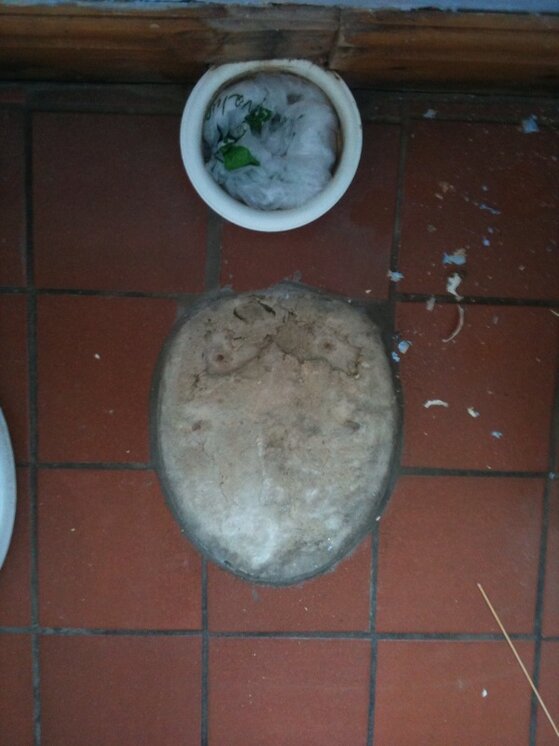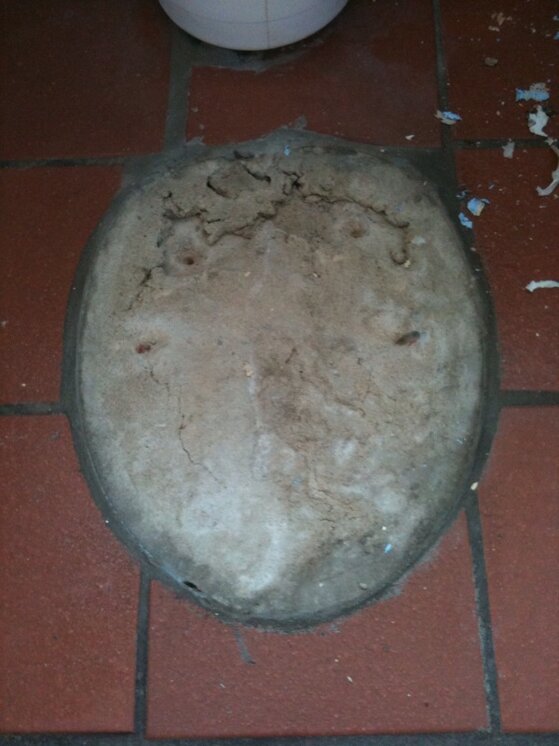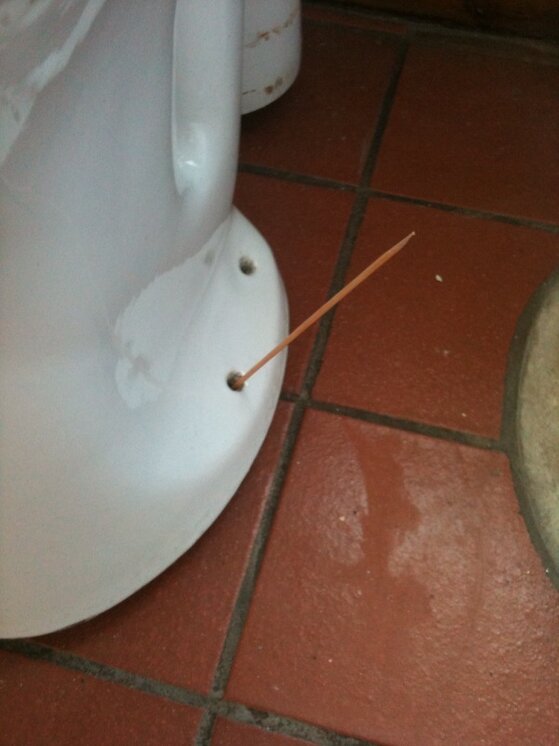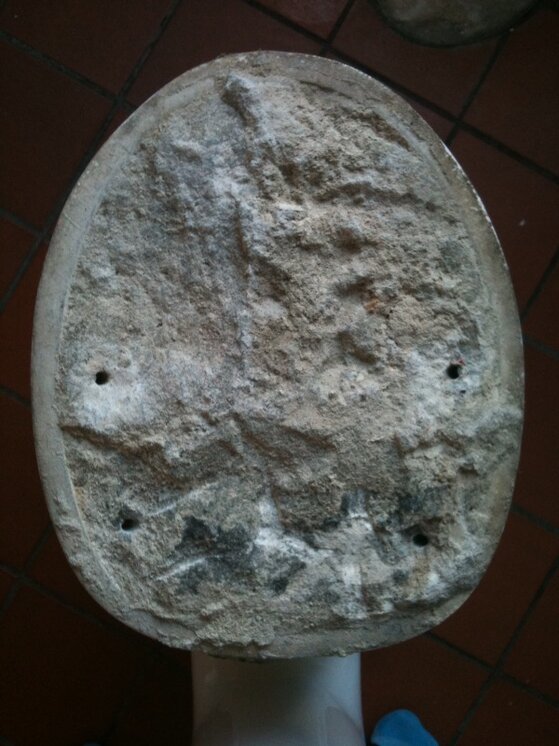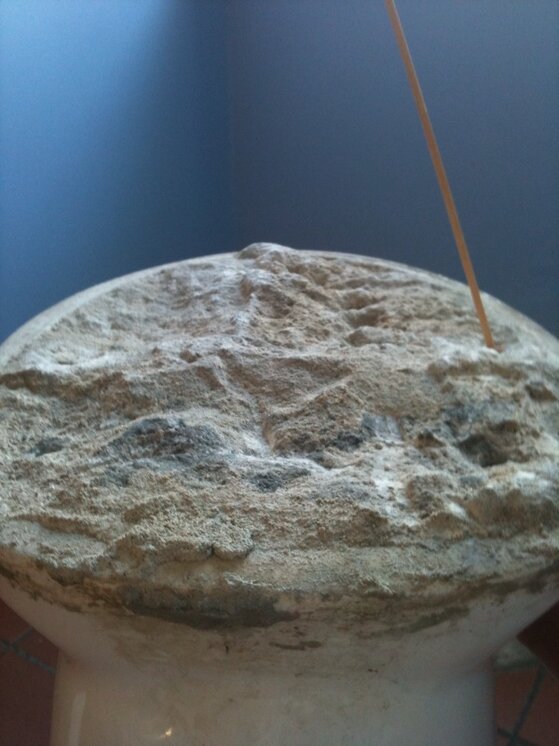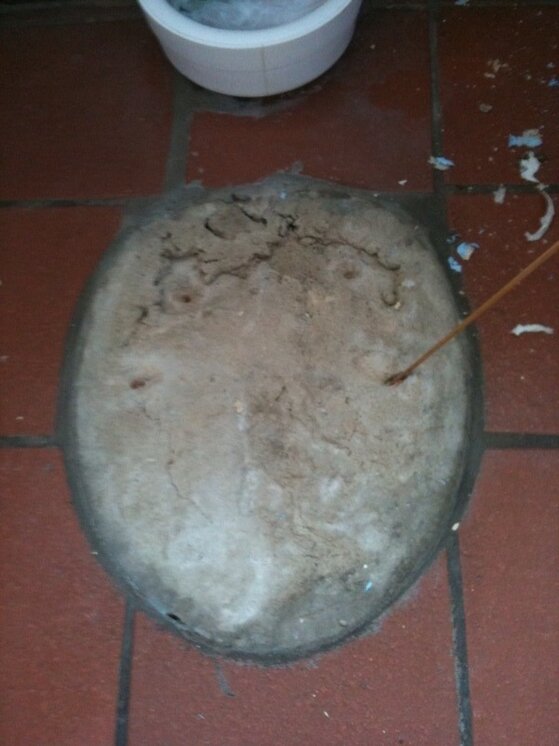D
Dr Bob
Before I start can I say I know this is a tiling forum, not a plumbers one, but when it comes to fixing ceramic things to surfaces I trust a tilers advice over a plumbers anyday!
So, the issue that I need some thoughts on...
I have an existing toilet pan which rocks. On removal I find that it has been set on a mortar bed with four much-too-short brass screws for anchorage. The mortar appears a little crumbly in places so the screws have pulled out and the pan come away from the floor. I now have mortar on the floor and the negative impression on the base of the pan. In addition it has completely crumbled away round two of the screws leaving a void and the concrete floor beneath it visible.
So what would peoples suggestions be? I have thought of the follow so far, an comments welcome!
1) The plumbers way - ooze silicone everywhere and glue it down
2) Carefully try to clean away the mortar, prepare a proper bed and rebed on mortar and screw
3) Much longer screws to get into the concrete floor, drilled and plugged for a proper job
4) Keraflex over the existing mortar and rebed
Many thanks,
Bob
So, the issue that I need some thoughts on...
I have an existing toilet pan which rocks. On removal I find that it has been set on a mortar bed with four much-too-short brass screws for anchorage. The mortar appears a little crumbly in places so the screws have pulled out and the pan come away from the floor. I now have mortar on the floor and the negative impression on the base of the pan. In addition it has completely crumbled away round two of the screws leaving a void and the concrete floor beneath it visible.
So what would peoples suggestions be? I have thought of the follow so far, an comments welcome!
1) The plumbers way - ooze silicone everywhere and glue it down
2) Carefully try to clean away the mortar, prepare a proper bed and rebed on mortar and screw
3) Much longer screws to get into the concrete floor, drilled and plugged for a proper job
4) Keraflex over the existing mortar and rebed
Many thanks,
Bob

